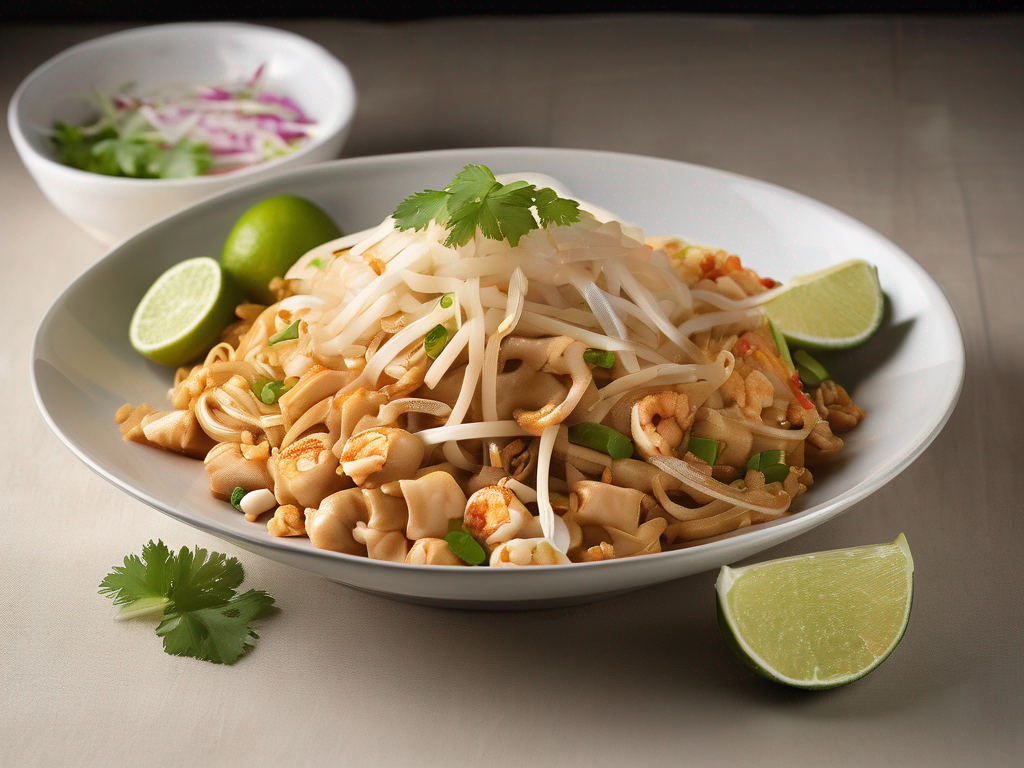
The Ultimate Guide to Safely Storing Frozen Pad Thai
Get Your Free Food Safety Cheat Sheet
30 most common foods with instant answers. Print it and stick it on your fridge—completely free!
The Ultimate Guide to Safely Storing Frozen Pad Thai
When it comes to enjoying a delicious meal like [frozen pad thai](/food/frozen pad thai), proper storage is key to maintaining its freshness, flavor, and overall quality. Whether you've made a big batch of pad thai and want to freeze leftovers or purchased a pre-packaged frozen meal, knowing how to store it safely is essential. In this comprehensive guide, we will explore the best practices for storing frozen pad thai to ensure maximum freshness and safety. (Frozen pad thai)
Understanding Frozen Pad Thai
Before diving into the storage tips, let's take a moment to understand what frozen pad thai is and why it's important to handle it properly. Pad thai is a popular Thai dish consisting of stir-fried rice noodles, vegetables, protein (such as chicken, shrimp, or tofu), and a flavorful sauce made from ingredients like tamarind paste, fish sauce, and chili. When properly prepared and frozen, pad thai can be a convenient and tasty meal option for busy days.
The Importance of Proper Storage
Proper storage of frozen pad thai is crucial for several reasons:
- Maintaining Freshness: Proper storage helps retain the flavor and texture of the dish.
- Preventing Spoilage: Correct storage methods help prevent bacterial growth and foodborne illnesses.
- Minimizing Freezer Burn: Adequate packaging and storage techniques can reduce the risk of freezer burn, which can affect the quality of the food.
Now, let's explore the steps you can take to safely store frozen pad thai for maximum freshness.
Step-by-Step Guide to Storing Frozen Pad Thai
1. Cool Pad Thai Properly
Before freezing pad thai, it's essential to cool it down properly to room temperature to avoid condensation and ice crystals forming during freezing. Follow these steps:
- Allow the dish to cool on the counter for about 30 minutes.
- Stir the pad thai occasionally to help it cool down evenly.
2. Choose the Right Container
Selecting the right container is crucial for preserving the quality of frozen pad thai. Opt for containers that are:
- Airtight: Choose containers that seal tightly to prevent air exposure.
- Freezer-Safe: Use containers specifically designed for freezer storage to prevent freezer burn.
- Appropriate Size: Use containers that match the portion size to minimize air exposure when reheating.
3. Package Pad Thai Properly
Proper packaging is essential for maintaining the flavor and texture of frozen pad thai. Follow these packaging tips:
- Place the cooled pad thai in the airtight container, leaving some space at the top for expansion.
- Press down gently to remove any air pockets.
- Seal the container tightly to prevent air from entering.
4. Label and Date
To keep track of your frozen pad thai and ensure you use it within a safe timeframe, be sure to label the container with the date of preparation. Use a permanent marker to write the date clearly on the container.
5. Store in the Freezer
Once properly packaged and labeled, place the container of pad thai in the freezer. Here are some freezer storage tips:
- Optimal Temperature: Keep the freezer set at 0°F (-18°C) for best results.
- Avoid Overcrowding: Ensure there is enough space around the container to allow for proper air circulation.
Safety Tips for Storing Frozen Pad Thai
Proper Thawing
When it's time to enjoy your frozen pad thai, it's crucial to thaw it safely to prevent bacterial growth and maintain the quality of the dish. Follow these thawing tips:
- Thaw in the refrigerator overnight for slow, safe thawing.
- Alternatively, use the defrost setting on your microwave for quicker thawing.
Reheating Guidelines
When reheating frozen pad thai, follow these guidelines to ensure it is thoroughly heated and safe to eat:
- Reheat until the internal temperature reaches 165°F (74°C) to kill any bacteria.
- Stir the pad thai halfway through the reheating process to ensure even heating.
Conclusion
Properly storing frozen pad thai is essential for maintaining its flavor, texture, and safety. By following the steps outlined in this guide, you can enjoy delicious pad thai with confidence, knowing that it has been stored safely and correctly. Remember to cool, package, label, and store your frozen pad thai properly to maximize freshness and minimize the risk of foodborne illnesses. With these tips, you can enjoy a delicious and convenient meal whenever the craving strikes.
Next time you prepare or purchase frozen pad thai, use these guidelines to ensure it stays fresh and flavorful until you're ready to enjoy it! (Frozen pad thai)
Authoritative Food Safety References
These agencies and university labs inform every tip and health precaution we publish.
USDA FoodKeeper – Cold Storage Guidelines
Official refrigerator, freezer, and pantry timelines maintained by the U.S. Department of Agriculture.
Visit USDA FoodKeeperFDA Produce Safety Rule & Grower Guidance
Field-to-fridge handling practices that prevent contamination of fruits, vegetables, and leafy greens.
Visit FDA Produce SafetyCDC Foodborne Illness Prevention Hub
Surveillance-backed guidance on pathogens, symptoms, and steps to reduce foodborne illness risk.
Visit CDC Food SafetyUC Davis Postharvest Technology Center
University research detailing optimal storage atmospheres for produce after harvest.
Visit UC Davis PostharvestPenn State Extension – Home Food Preservation & Safety
Peer-reviewed extension bulletins on safe canning, chilling, and reheating practices.
Visit Penn State ExtensionGet Your Free Food Safety Cheat Sheet
30 most common foods with instant answers. Print it and stick it on your fridge—completely free! Want more? Upgrade to the complete guide with 70+ foods.
Scan your food directly and get instant safety info using our AI-powered camera feature.